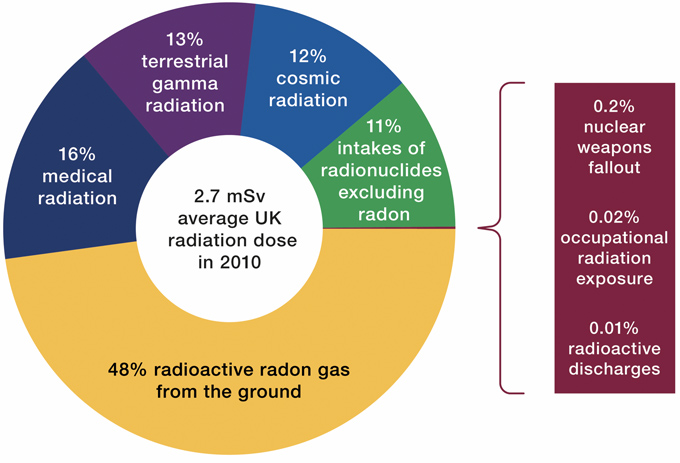Checking in the USA
The Surgeon General as well as the EPA recommend that radon degrees of 4 picocuries or more inside houses be reduced. The EPA states that radon levels less than four picocuries still position a threat, particularly for cigarette smokers. Radon Act 51 passed by Congress established the all-natural outside degree of radon gas (0.4 pCi/L) as the target radon level for indoor radon degrees. The United States EPA was tasked with establishing sensible standards radon mitigation system costs as well as recommendations for the country. At or over this degree of radon, the EPA recommends you takecorrective measures to minimize your exposure to radon gas.
Is a radon level of 5 bad?

Safe radon levels. The best radon level measurement would be zero. The average global outdoor radon level varies between 5-15 Bq/m3, equal to 0.135-0.405 pCi/L. For every 99.9 Bq/m3, or every 2.7 pCI/L increase in long term radon exposure, lung cancer risk rises 16 percent.
This type of radon reduction system makes use of the natural stress differential to create an air flow as well as move the radon out. Research has actually suggested that in houses with high radon, greater than 70% of the time, a passive system will certainly not get radon degrees to acceptable degrees. Radon is a cancer cells causing toxic gas that can not be seen, smelt, or tasted. The Cosmetic surgeon General warns that radon is the 2nd leading cause of lung cancer cells, causing over 20,000 lung cancer fatalities https://www.callupcontact.com/b/businessprofile/Radon_1/7261728 every year.
Does a radon mitigation system hurt resale?
Having an active Radon mitigation system in one's house does not adversely affect the home's resale value and since Radon is so easily controlled once it's detected it is no reason not to buy the property if all other factors line up favorably for buying the house.

Given that it is typically a gas, it can potentially permeate up to the surface with fractures in the earth. It is a naturally-occurring gas that can permeate your house as well as cause serious healthy dangers to the entire family. To properly be particular you're risk-free from radon, effort to pair the insulation with a constant radon mitigation system. Although radon is found in all sorts of structures, we get most of our direct exposure once we go to residence. Radon reduction systems are suggested to be reliable systems that lower the threat of radon entrance right into your residence.
- It results as part of the contaminated decay chain of uranium as well as thorium in the earth's crust.
- In the United States, the EPA suggests that rehabilitative action be taken if the level airborne is found to be above 4 picocuries per liter (pCi/L).
- Radon is a colorless, odor-free radioactive gas that is present in trace amounts in the setting.
- One of the most common remedy is to implemented a radon reduction system including an air vent pipeline and blower to draw air from under the piece under your house and exhaust it outside.
- The issue is that it can leak up from the ground as well as build up in structures; there is clear evidence that breathing air with high concentrations of radon gas can cause lung cancer.
Do radon mitigation systems really work?
The Surgeon General and the EPA recommend testing for radon and reducing radon in homes that have high levels. Fix your home if your radon level is confirmed to be 4 picocuries per liter (pCi/L) or higher. Radon reduction systems work. Some radon reduction systems can reduce radon levels in your home by up to 99%.
Methods of radon-in-water reduction
Is it safe to buy a house with a radon mitigation system?
If you don't perform regular follow-up testing, you may be being exposed to high level of radon under the false pretense that you are safe because you have a mitigation system. With that said, most radon mitigation systems installed by good contractors will work great to reduce radon levels.
The systems can likewise shut out various other dirt gases like, methane, trichloroethylene, chlorine, negative odors and water vapors. Having a residence with a radon mitigation system in place as well as keeping the levels reduced will certainly help reduce lung cancer cells risk. After the system is installed, the radon degrees start to drop almost quickly.
What is involved in radon mitigation?
Mitigation of radon in the air is accomplished through ventilation, either collected below a concrete floor slab or a membrane on the ground, or by increasing the air changes per hour in the building. Treatment systems using aeration or activated charcoal are available to remove radon from domestic water supplies.
Have your home examined, as well as mitigated if the outcomes come back above 4.0 pCi/L. Fourteen single-family separated houses in Spokane, Washington, and Coeur D'Alene, Idaho, were kept track of for 2 years after high concentrations of indoor radon had been alleviated. Each residence was checked quarterly making use of mailed alpha-track radon detectors released in each zone of the framework. Additionally, residents were additionally talked to concerning their upkeep, operation, and also subjective examination of the radon reduction systems. When contrasted with concentrations determined right away after reduction, quarterly alpha-track dimensions showed that radon levels had raised in many of the houses during many follow-up dimension periods.
